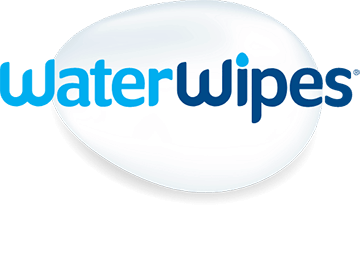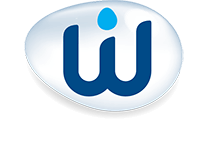What is weaning?
Weaning refers to the process of transitioning a baby from a diet of milk to solid foods. It’s an exciting milestonewhere babies start exploring new flavors and textures. Weaning is often done in stages, but there are different methods parents follow, so we have developed this information to help educate and guide you. For more tips on how to safely and successfully wean your baby, check out our weaning guide.
Baby-led weaning vs spoon-fed weaning
There are two main methods parents typically follow when it comes to weaning– baby-led weaning (BLW) and spoon-fed weaning:
Spoon-fed weaning
Spoon-fed weaning is a traditional method of weaning. It involves transitioning a baby over to solid foods by feeding them purees and mashed foods from a spoon. Parents and caregivers play an active role in spoon-fed weaning, as they control portion sizes and textures.
Baby-led weaning
Baby-led weaning is a more unstructured approach to weaning. It involves bypassing purees and jumping straight to finger foods. Essentially, the idea of baby-led feeding is to offer baby foods that they can hold in their hand and feed themselves rather than being fed by an adult with a spoon.
The pros and cons of weaning methods
The benefits of baby-led weaning over spoon-fed weaning are that your bub will become more independent, have a wider variety of food tastes and may develop better control of their appetite. The main disadvantage of baby-led weaning is that it can be a messier approach compared with spoon-fed weaning.
Signs that your baby is ready for weaning
Usually, you’ll notice signs that your baby is ready for weaning. These may include:
Your baby can stay in a sitting position and hold their head upright.
They are starting to coordinate their eyes, hands, and mouth.
Your baby looks at their food and can move it around in their mouth and swallow rather than just spit it back out.
If you have noticed these signs and feel ready to give weaning a go, these top tips from doctor and mom Dr. Pixie McKenna, author of several books on weaning and how babies develop as they grow, may help get you started. Remember, it is important to wean your baby gradually, and not suddenly or abruptly.
How to start weaning
It can be tough to know where to start when it comes to weaning. Here are our top tips for a smooth process:
Allow your baby to explore what they are eating by touching and holding the food. They may even feed themselves or show you that they want to hold the spoon.
Let your little one lead. They will tell you when they are hungry and when they are full - do not force your baby to eat.
Babies imitate their parents - sit down as a family during mealtimes to demonstrate to your baby how to eat.
The stages of weaning
It’s important to understand how your baby’s needs evolve as they grow and develop. Here are the different stages to bear in mind when you start moving your baby onto solids.
Baby weaning at 6 months
In the beginning, babies don’t need three meals a day. Feeding them different foods in small amounts will be enough to help them get started.
Ensure your baby isn’t tired before eating and take your time.
Offer food before their usual milk feed, whether you’re breastfeeding or bottle feeding. If you do it after, your baby may be full.
Don’t stress. It can take a few attempts before your baby accepts something new with a different texture!
Baby weaning at 7 to 9 months
During these months your baby will slowly begin to have three meals a day alongside their usual milk feeds.
This is a great time to introduce finger foods as your baby is learning how to pinch with their forefinger and thumb.
Progressively begin to increase the amount and variety of food you offer to your baby. This will help ensure they are getting all the necessary nutrients they need.
As your baby begins to eat more they will naturally adapt their milk consumption and may want less during their feed.
Baby weaning at 10 to 12 months
Your baby should now be having three meals a day while still having their usual feeds. They are likely starting to self-feed with utensils.
Hopefully, by this stage, weaning is now becoming a fun experience for your baby, while they hold, chew, and swallow a wider variety of tastes and textures.
Best foods for weaning
Traditional weaning methods involve feeding your baby mashed, pureed, or soft-cooked fruits and vegetables.
We recommend feeding your baby a range of flavors rather than just sticking to one, as this could help stop them from growing up to be fussy eaters.
For example, rather than just feeding them sweet vegetables such as sweet potato or carrots, mix them up and get them to try savory vegetables like broccoli and cauliflower too. We have a guide on finger foods for babies if you’re looking for more inspiration.
Foods that may trigger an allergic reaction (such as peanut spreads, eggs, gluten, and fish) can be introduced from six months, but only in very small amounts, to help you identify any reactions. If you are concerned that your baby may be allergic to certain foods, you may want to take them to a doctor for a skin prick test. Here are some good BLW weaning foods to kick things off with:
Banana – raw and mashed
Broccoli – steamed and mashed
Cauliflower – steamed and mashed
Butternut squash – roasted and mashed
Applesauce – from the jar
Avocado – pureed
Eggs – soft-boiled or scrambled (introduce eggs slowly from 6 months, as they can be an allergen)
Toast – cut into sticks once the bread is toasted
Yogurt – plain
Weaning food chart
Foods to avoid
To keep baby safe and healthy, here is a list of foods to avoid feeding them when weaning:
Sugary foods – The American Academy of Paediatrics recommends not giving your child sugar until they are at least two years old and that they should not consume more than six teaspoons in a day.
Salt– Your baby should not be having more than 1g of salt a day as this is bad for their kidneys.
Whole nuts – These are dangerous due to the risk of choking; therefore it is safer to have them in spreads. Introduce them slowly, as nuts could be an allergen.
Honey– Do not give your child honey until they are over a year old, as it contains bacteria that can be harmful to the baby’s intestines, potentially leading to a serious illness.
Raw shellfish – This should be avoided as it increases the risk of food poisoning.
Cheese– Avoid cheese that is made using unpasteurized milk as there is a risk that these cheeses carry a bacteria called listeria.
Cow's milk – While cow's milk is a good source of calcium for older children, it shouldn't be given to babies because they are unable to digest it at a young age. It can also irritate your baby's gut lining.
Rice milk – As well as cow’s milk, rice milk should be avoided as it contains arsenic.
Vegetarian and vegan diets
If you follow a vegan or vegetarian diet you may be considering feeding your baby in the same way. However, your baby must receive the following nutrients, whether they eat animal products or not.
Vitamin B12 – This is normally found in animal foods, eggs, cheese and milk. But, can be given to the baby in the form of supplements or foods fortified with B12 such as yogurt, and milk alternatives such as soya and coconut drinks.
Omega-3 – This fatty acid is found in oily fish like salmon. If your baby does not eat fish, ground flaxseeds, ground walnuts, or ground chia seeds are great sources of omega-3.
Iron– Your baby can get this through lentils, beans, chickpeas, dried fruit, and whole grains.
Calcium – The usual source of calcium is through milk and dairy products which is important for the development of teeth and bones. You can give your baby alternatives such as soya, oat, or almond milk and also bread, almond butter, green leafy vegetables, beans, and lentils.
Protein– A great source of protein can be found in beans, chickpeas, lentils, and soya products. Seeds and nuts also offer protein, but ensure they are ground or made into a spread for children under five years.
Iodine– Natural sources of iodine in our diet come from foods such as fish, cow’s milk, and other dairy products. Iodine can also be found in plant foods such as cereals and grains, or an iodine supplement can be given.
WaterWipes Textured Clean have been developed specifically for your growing baby using a drop of fruit and soapberry extract. Suitable for toddlers with sticky hands and faces, a naturally powerful cleanser that is kind on sensitive skin.
How we wrote this guide
The information in this guide is based on parental and medical information from a variety of sources including BabyCenter, Healthline and NI Direct. You can find a full list of sources used for this article below. The content on this page should not replace professional medical advice.

